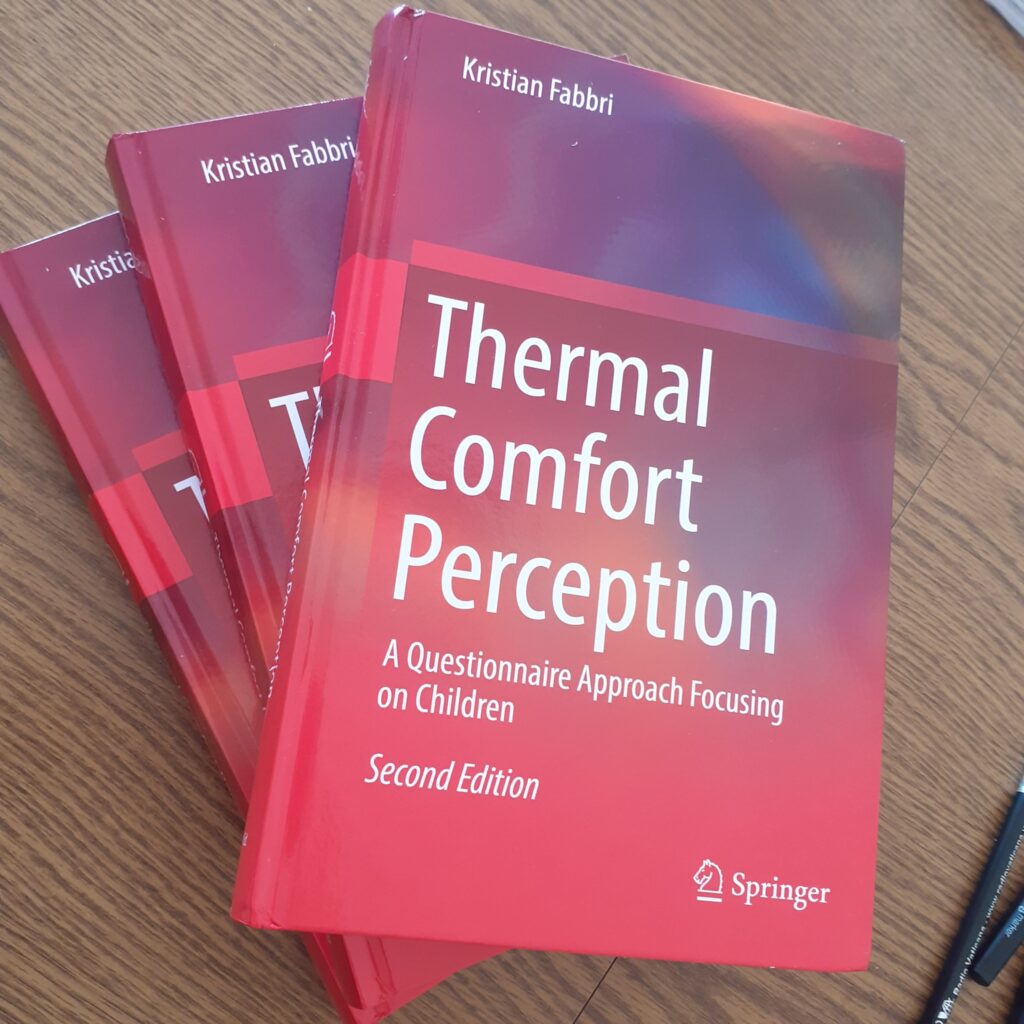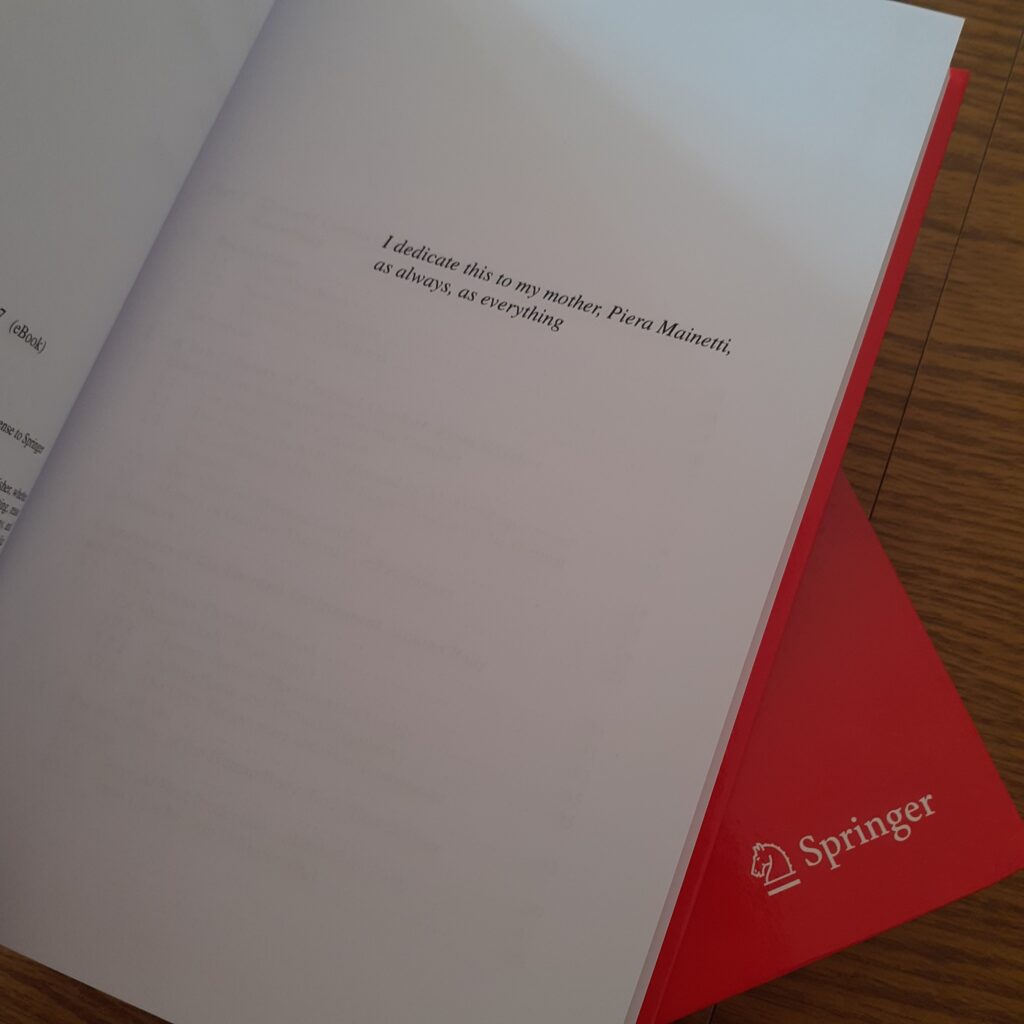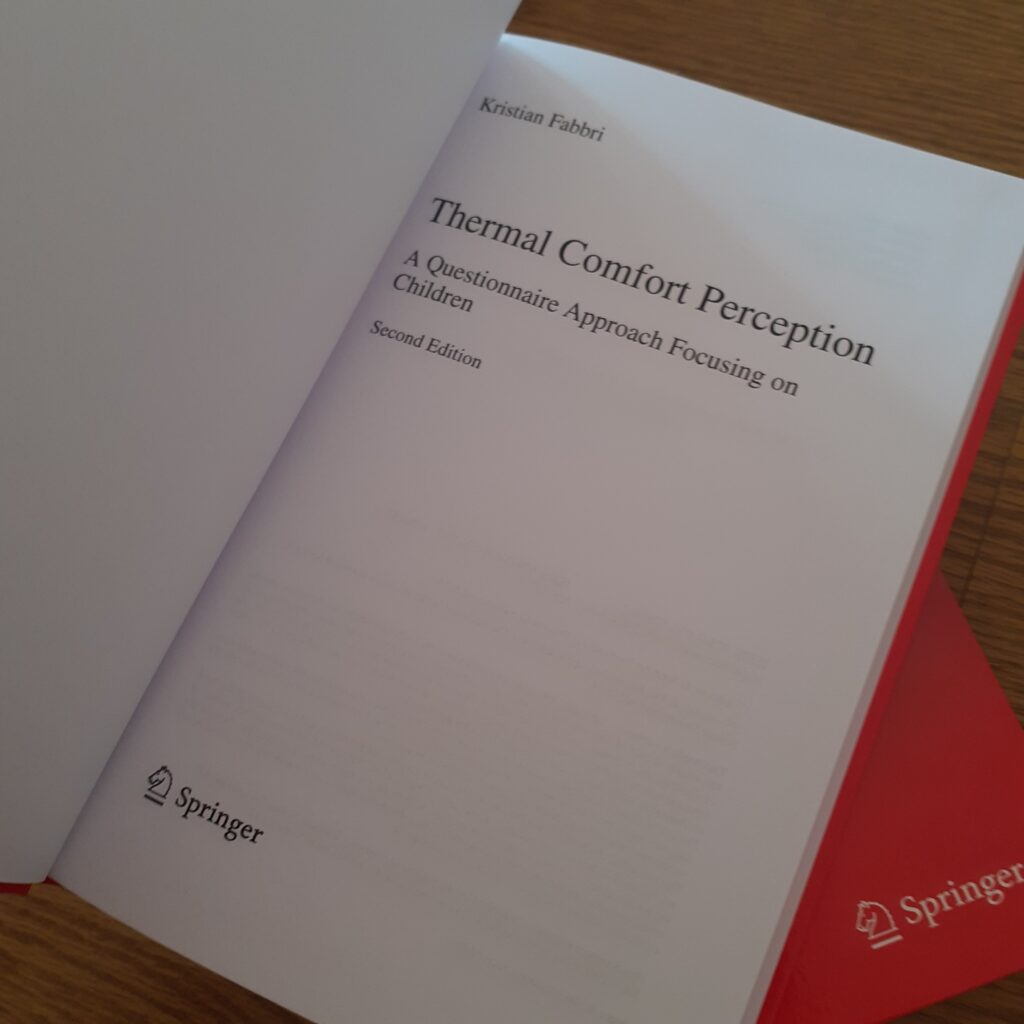Quasi un anno fa mi scrive l’Executive Editor di Springer dicendomi che il libro “Indoor Thermal Comfort Perception” (…) “It is in the top 20 percent of cited Springer titles in 2023. The book is clearly having a big influence on researchers in its subject area.” (tra i più citati nell’ambito di ricerca) chiedendomi se sono interessato alla seconda edizione.
Accetto, studio, chiacchiero, lavoro e imparo molte molte cose sul comfort indoor e outdoor, sulla outdoor education, sulla percezione dei bambini, e tante altre cose che scrivo nel libro proponendo alcuni strumenti per la ricerca o il progetto e nuovi percorsi da indagare.
Oggi la seconda edizione stampata Thermal Comfort Perception – Second Edition.
Dedicated to my mother as always, as everything.
(English)
Around one years ago Springer Executive Editor ask to me to adding/update my book Indor Thermal Comfort Perception so “It is in the top 20 percent of cited Springer titles in 2023. The book is clearly having a big influence on researchers in its subject area.”
I accept, I study, I research I chatting with other researcher, I do an hard work and I discover and learn several and several new thing about comfort, oudoor education, children knowledge, etcetera. I put all thing in new second edition with some new reseach results and proposal.
Thermal Comfort Perception – Second Edition.
Dedicated to my mother as always, as everything.



thermalcomfort #secondedition #comfort #outdoorcomfort #children #indoorthermalcomfort #thermalcomfortperception #research #climatechage #wellbeing #childrenwellbeing #outdooreducation #education #research #springer #springereducation #childrenperceptions #urbanclimate #indoorthermalcomfort #indoorcomfort #school #schools #design #architecture #buildingschools #education #ergonomic #architecture #sustainability #heatwave
About this book
This book offers a comprehensive exploration of children’s understanding and experiences of thermal comfort. The book provides a methodology for evaluating comfort that takes into account the unique perspectives of children. The first part of the book provides an overview of the history of thermal comfort, the human body and environmental parameters, and common thermal comfort indexes. It also offers guidelines for creating questionnaires that accurately assess children’s perceptions of indoor thermal comfort. The book then delves into children’s understanding of the concepts of comfort and energy, as well as the factors that influence their perception of these concepts. It addresses the psychological and pedagogical aspects of thermal comfort judgment, as well as the architectural and environmental characteristics that contribute to children’s perceptions of comfort. First published as Indoor Thermal Comfort Perception, this updated edition also includes new sections on architecture and sensitivity, exploring the impact of classroom spaces on learning, and outdoor education and thermal comfort outdoors, based on qualitative research. These additions provide valuable insights for future studies on these topics. While physical parameter measurements and comfort indexes are useful in thermal comfort, the book emphasizes the importance of ergonomic assessments in the form of questionnaires, which offer unique insights into children’s experiences. The book fills a critical gap in understanding children’s perceptions of thermal comfort and is essential reading for HVAC engineers, architects, environmental psychologists, and researchers in the medical and cognitive fields.
